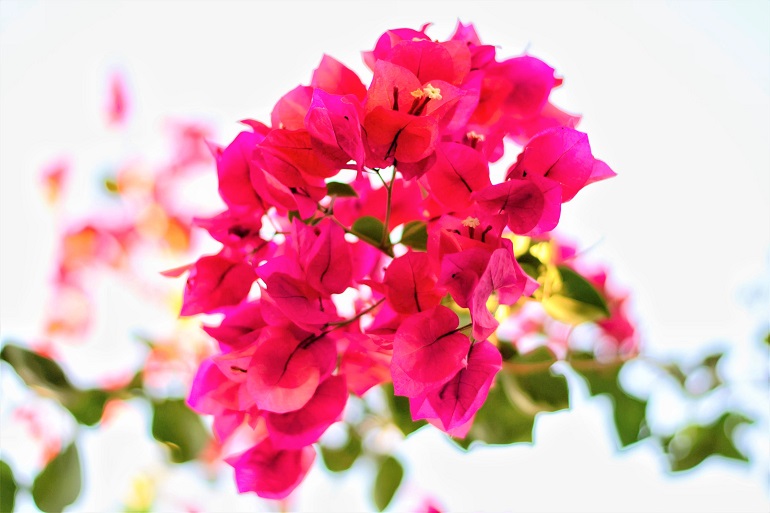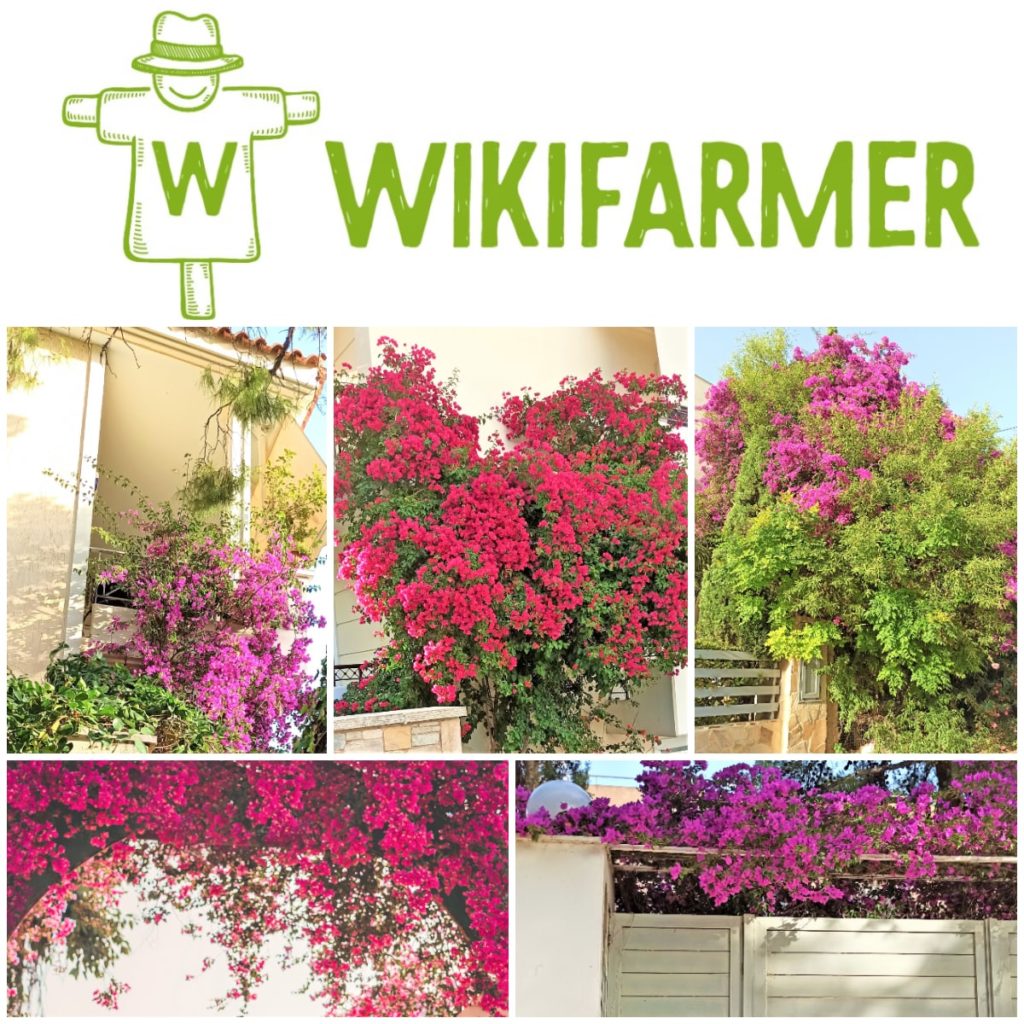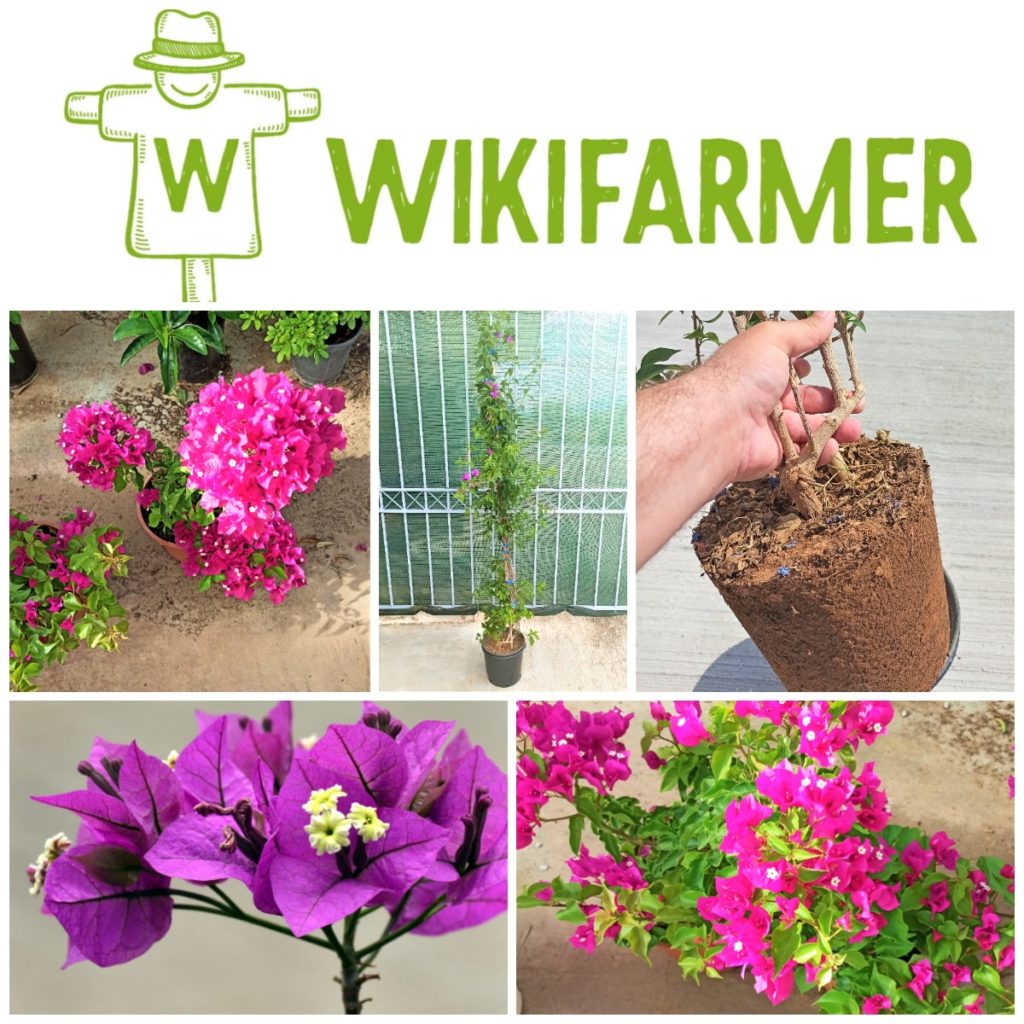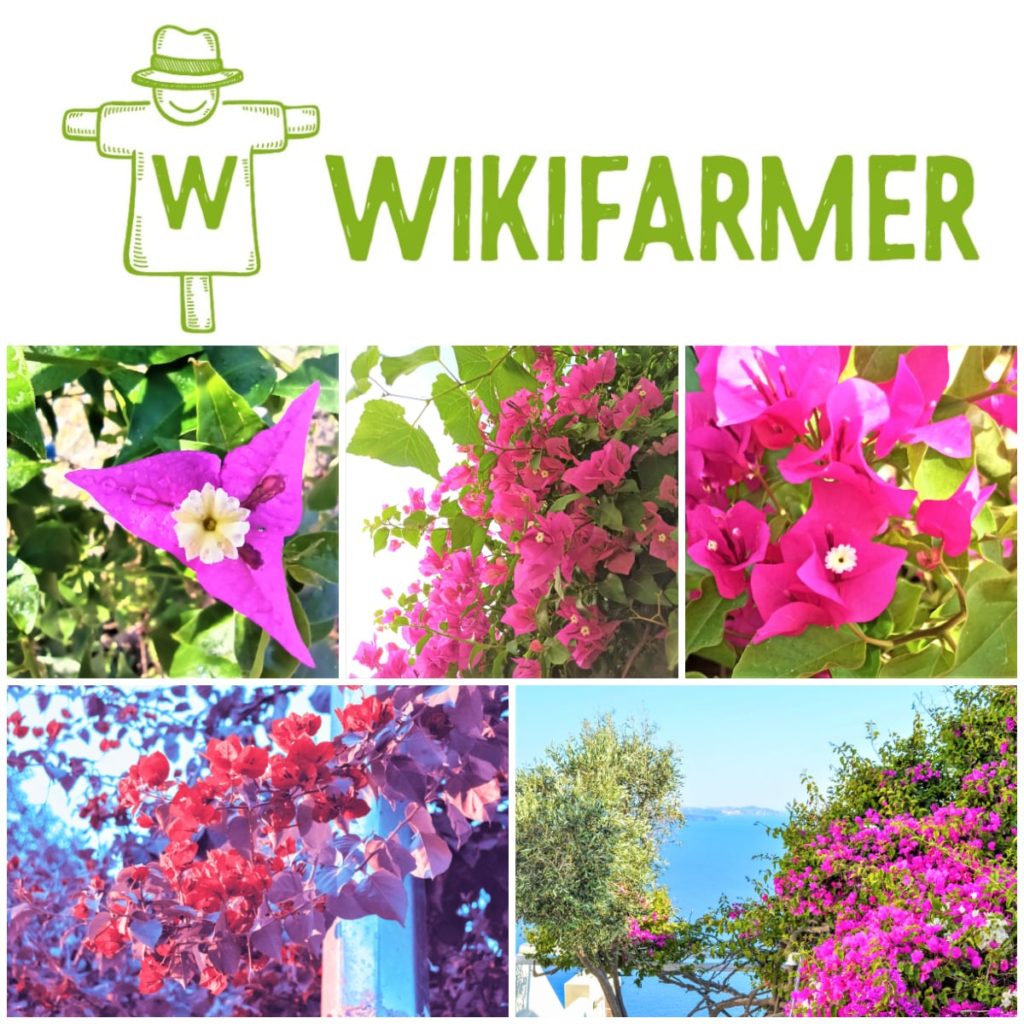Βougainvillea in pots

This post is also available in:
This post is also available in:
![]() Français (French)
Français (French) ![]() Deutsch (German)
Deutsch (German) ![]() Nederlands (Dutch)
Nederlands (Dutch) ![]() हिन्दी (Hindi)
हिन्दी (Hindi) ![]() العربية (Arabic)
العربية (Arabic) ![]() 简体中文 (Chinese (Simplified))
简体中文 (Chinese (Simplified)) ![]() Italiano (Italian)
Italiano (Italian) ![]() 한국어 (Korean)
한국어 (Korean)
A bougainvillea plant “hugging” a white island house with blue windows is a trademark of Greek summer. Bougainvillea (Bougainvillea sp.) is a perennial climbing ornamental plant native to Brazil.
In tropical climates, it is evergreen, but in regions like the Mediterranean, it sheds its leaves in most cases during winter. Bougainvillea is a resilient plant and can grow easily in a pot on our balcony. If we follow some basic steps, they will probably survive for several years (at least ten), blooming and filling our balcony with vivid colors.
Things we need to pay the most attention to:
The species of bougainvillea will define the place we need to put it.
When we visit a shop or a plant nursery to buy our bougainvillea plant, we will probably have to choose between different species. There are the dwarf varieties and the full-growth ones.
If we are interested in having a plant on our balcony that will not exceed one and a half meters in height, we will choose a dwarf variety. However, most people select varieties that can reach up to ten meters in height. Bougainvillea is an intensively (strongly) climbing plant. Its thorns allow the plant to reach great heights, usually taking advantage of another tree or shrub (often a coniferous – Leyland).
Many people prefer to place a bougainvillea in a pot on the first floor, letting it deliberately “fall” to the ground floor, creating a waterfall of colors. Finally, others place two pots of bougainvillea on the sides of the main entrance door or yard, forming a colorful arch.
It goes without saying that if we choose a full-size bougainvillea, we will have to transplant it in a pretty large pot from the beginning and place it in a spot facing south. In any case, the bougainvillea needs direct exposure to sunlight for at least 6 hours a day. Otherwise, the flowers will be of poor quality and cachectic.
 Transplantation
Transplantation
After buying our bougainvillea, the first thing to do is to transplant it into a larger pot, ideally made of terracotta. Unlike plastic, this material has pores and helps decrease excessive soil moisture harmful to our plants. Regardless of its material, we need to open holes at the bottom of the pot allowing drainage of the extra water within minutes. To reduce the risk of root rot, we avoid using soil rich in peat, as peat retains excessive moisture. Instead, we choose a substrate (soil) with good drainage characteristics and mix it with river sand and perlite.
 Bougainvillea’s Water Requirements – Irrigation Of Bougainvillea
Bougainvillea’s Water Requirements – Irrigation Of Bougainvillea
Root rot is the most common reason for bougainvillea’s death. We need to be cautious and avoid excessive watering, especially when plants grow into pots. Over-watering will temporarily promote shoot and leaves production at the expense of flowering while finally will lead to root rot and the death of our plant. Generally, bougainvillea is drought-resistant, and even under the high temperatures of summer, this plant is one of the ornaments that do not need watering every day. We irrigate when we see (and feel with our hand) that the soil of the pot is dry.
Fertilization and Nutrient Requirements of Bougainvillea
There are different opinions regarding the fertilization of bougainvillea. It is possible for a plant growing in a yard to thrive and produce thousands of flowers without any fertilizers or compost. However, this phenomenon is the result of various case-specific conditions. The general rule is that the average bougainvillea plant needs help to create new vegetation and flowers. We can add a water-soluble fertilizer (7-7-7) at least three times during the growing season (spring and summer). The exact dosage of each fertilizer is reported by the manufacturer on the product’s label. In most cases, we can add three caps to a 3-liter watering can and water with this solution two pots.
Pruning of Bougainvillea
With pruning, we can shape our bougainvillea depending on our desires. For example, we can give a specific direction and structure-morphology to the plant. Furthermore, by removing old, dry, and diseased branches, bougainvillea will grow new shoots, and by extension, fresh flowers. Usually, when bougainvillea grows in pots on our balcony, the plants climb the pergola or other vertical supports skeleton and need minimal pruning in early spring to enhance growth.
Throughout spring and summer, we can remove all dry flowers and shoots. However, strict pruning must wait until the plant becomes semi-dormant in the fall. Flower thinning is also an essential technique. Removing small, immature, or defective flowers forces the plant to transfer the available nutrients to fewer but better flowers. The pruning shears we will use during pruning and deadheading must be of high quality and accompanied by the corresponding certificates.
 Overwintering
Overwintering
When we realize that the temperature is about to drop below zero, and since our bougainvillea is small and has not climbed to a fixed point, we can place the pot either in a semi-outdoor protected area or even indoors. In the latter case, we should not put our bougainvillea near a heat source (e.g. radiator).
Change of Flowerpot approximately every three years.
We start with a relatively small pot (but bigger than the one we bought it in). For example, the flowerpot we purchased in the nursery was 9 liters, and we transplanted it into a 20-liter flowerpot. We need to transplant bougainvillea in larger pots gradually e.g. from the 20-liter flowerpot (usually 30 cm – 1 foot deep) to a 30-liter flowerpot (usually 38-40 cm- 1.3 feet deep) after three years.
When transplanting into a larger pot, always be careful not to hurt the roots, as it will take a long time for the plant to recover after this shock. We must always handle the delicate root system of the bougainvillea with great care.
Personal safety measures
The care of the bougainvillea can be a bit dangerous due to the thorns well hidden from the numerous flowers. If you have decided to grow bougainvillea on your terrace-balcony, you need to consider buying special gloves to protect you from thorns during gardening.
The symbolic meaning of bougainvillea changes in different parts of the world, but it is said to symbolize the welcome of visitors. It is a plant that demands so little and gives so much in return.








































































